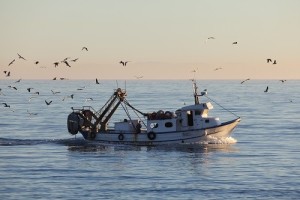 At the root of purchasing any seafood, there are two things you should seek out. If you’re visiting a reputable, local fish monger, he should have these answers readily available and happy to share. If you’re visiting a lesser informed seafood provider, you may have to put some pieces together, or pass altogether.
At the root of purchasing any seafood, there are two things you should seek out. If you’re visiting a reputable, local fish monger, he should have these answers readily available and happy to share. If you’re visiting a lesser informed seafood provider, you may have to put some pieces together, or pass altogether.
1.) WHERE IT’S FROM
This is maybe the most important thing you should know about your seafood. There are several reasons, and most people don’t give it a second thought. Freshness is certainly a consideration, the closer to you the better, but seafood can remain fresh over long distances with proper handling. While the quality may certainly suffer in a frozen product or one that requires time in transit, compared to your local fish monger, that can oftentimes be negligible (if noticeable at all) with the proper care.
More importantly, you want to know where your seafood is from for other more consequential reasons to both your health, and the environment. It’s been reported that up to 90% of seafood consumed in the US is imported from foreign countries. And less than 1% of that imported seafood is inspected by the FDA. As if that’s not bad enough, only 0.1% is inspected for drug residues, and only 13 contaminants are tested for (Europe tests for 34). About half of that 90% of seafood in the US is farmed in a foreign country, meaning it’s subjected to essentially unregulated chemicals and contaminants. Mislabeled seafood is also a problem in the US, with a recent report from Oceana estimating 18% of seafood is mislabeled in the US at retail.
Essentially, if you don’t know where your seafood is from, there’s a 90% chance it’s from a foreign country. Which is not necessarily bad in itself, only that it’s nearly guaranteed that nobody from the FDA to Wolfgang Puck knows whether it’s even the species you think it is, what chemicals/antibiotics/hormones/drugs it was treated with, what fishing practices were used, and how it was handled prior to sale. Not things that are part of the Know Your Seafood handbook. You can take assurance in some imported seafood, but without knowing which country it originates from, you are gambling with your health and really not caring how it got from the ocean (or sewage runoff pond in Vietnam) to your plate, from fisheries regulation to health practices.
As a rule, avoid all seafood from Vietnam, especially shrimp and prawns. To be safe, just avoid all shrimp and prawns from SE Asia altogether. And most seafood from that region. There’s a reason why cheap seafood is cheap, and unless your local fish monger is giving you a price break for being such a great customer, it’s usually because it’s low quality, nearly un-regulated, and possibly mis-labeled. When in doubt, remember with seafood, you get what you pay for. If that crab or catfish looks too cheap to believe, there’s probably a reason for that, especially if you check out that country of origin label.
New Zealand, Canada and Mexico are examples of countries with trustworthy seafood importing practices, but due diligence is still strongly advised as they’re subject to the same level of nearly zero FDA testing as other foreign seafood.
American Tuna Products are 100% Approved by KnowYourSeafood.com.
2.) HOW IT’S CAUGHT
This second question is usually impossible to get an answer to, unless you are frequenting a reputable fish monger. The reason knowing where your seafood is from might be the most important thing you can ask, is because if you know that, you can at least make some assumptions about how it was caught or farmed. This has implications largely for the environment, but also for your health.
Different fishing methods have profoundly different impacts on the environment. We’ll save the run down of fishing methods for another post, but just because your seafood is from the US or Canada doesn’t mean it was caught or farmed responsibly. Destructive fishing methods unfortunately still take place in every country in the world, and part of Knowing Your Seafood means not supporting those practices. Quick rule of thumb: longlines and gill nets: bad, troll caught and pole/line: good. Open pen fish farming: bad, closed system fish farming: good. Exceptions to every rule of course, but we’ll go more in depth on that in a future post.
Furthermore, many farmed fish are treated with various chemicals, and raised in varying degrees of sanitation. US based fish farms are at least subject to stricter regulation, but health concerns do exist with farmed seafood, depending on the type of fish and farming method used. We’ll go deeper on that in a future post.
So the bottom line here, is if you’re a patron of your local fish monger or fish market, you should be able to get all the info you need, on the spot, to make an informed decision, and that of course is what we’re all about here. If you’re getting your seafood elsewhere, with less knowledgeable staff and less traceable origins, you’re taking it upon yourself to get answers to some of these questions, some of which may simply not be answerable. At least not without more headache than the price is worth.
If you want to know your seafood, you’ve got to know the answers to these two questions, at the very minimum, and know what those answers mean. The easiest way to do that is buying from a reputable source who can provide those answers.
Did you find this article helpful? Sign up for our newsletter!
SHARE THIS: